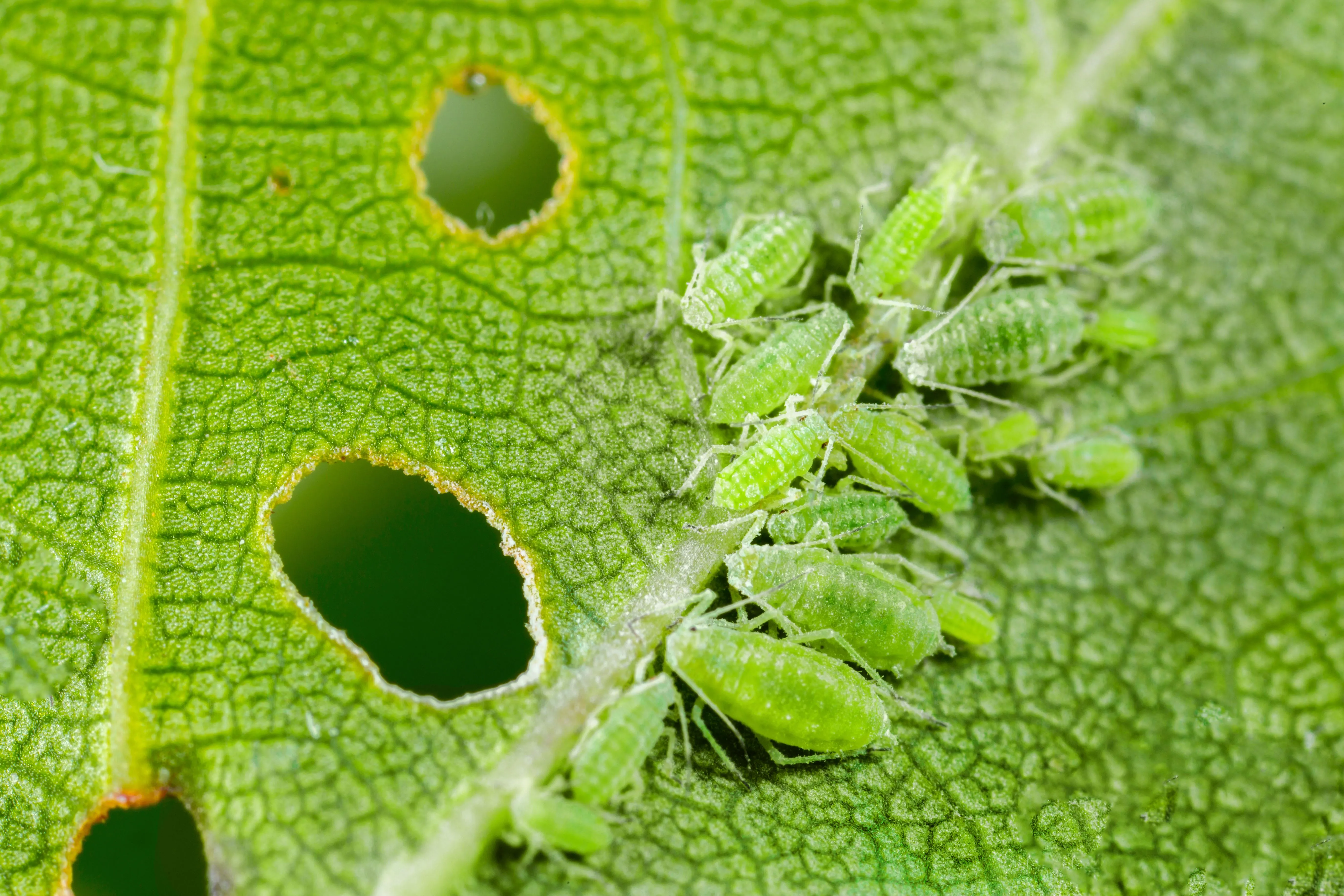Everyone wants to keep the trees in their yard healthy and looking great. However, even if you practice proper landscaping, trimming and pruning to perfection, there are some unwanted guests that can still do serious damage to your trees. Pests that infest trees can cause a ton of damage in a fairly short amount of time, and may eventually force you to remove a tree before its time. Fortunately, our team at Purple Care our experts when it comes to tree care and pest control. Keep reading to learn about the most common tree pests, and remember that for all your lawn care needs , you can trust Purple Care.
5 North American Tree Pests to Watch Out For
- Aphids: Aphids feed on leaves, and while they don’t usually damage the bark of trees very much, they may stunt tree shoots and affect leaf growth when working in large numbers. These insects produce large quantities of “honeydew,” a sticky substance that turns black and grows with sooty mold fungus. Some aphid species also inject toxins into plants that can cause serious damage. You may find aphids in the garden too, so you should always call a professional if you see more than one of these destructive pests.
- Fall Webworms: Fall webworms are a caterpillar species that is common across the United States. Though they can exist on hundreds of trees, these insects create huge silk webs and prefer persimmons, sourwoods, willows, and fruit trees. It is important to watch out for them in wet, humid climates, especially late in the fall season, when they come out to feed.
- Forest Tent Caterpillars: A caterpillar that can be found virtually anywhere there is hardwood, the fall webworm consumes foliage of most hardwood tree species, though they have a particular fondness for sugar maple, aspen, and oak trees. As opposed to other tent caterpillar species, the forest tent caterpillar do not make tents, instead making a silky sheet to lie in during molting. While you may not ordinally want to interrupt a caterpillar tent, you should definitely call for tree care if you notice this silk on one of your trees.
- Hard/Soft Scale Insects: Both hard and soft scale insects love to feed on and cause damage to trees and can be located in woody areas throughout North America. A part of the subfamily of “Sternorrhyncha,” these insects infest twigs, branches, leaves, fruits, and cause damage by feeding on the phloem, which is vascular tissue rich in sugar. Once scale insects have sunk their piercing/sucking mouthparts into your tree, you may notice symptoms such as premature leaf drop, decreased growth, branch dieback, chlorosis, aka yellowing, and eventual plant death.
- Beetles: Rather than single out the varying species of beetles that may damage your trees, we’re just going to focus on all of them, since there are so many species of beetles that feed on trees in North America. Types you may find include the Asian Longhorn Beetle, the Black Turpentine Beetle, the Douglas-Fir Bark Beetle, the Ips Beetle, the Mountain Pine Beetle, the Southern Bine Beetle, and the Western Pine Beetle. Bottom line: beetles are bad for trees, so if you spot any in your yard, call for pest control and tree care ASAP.
To reach Purple Care by phone, dial (817) 880-6052, or fill out our contact form online.




Comments (0)
Thanks for your comment!
Thanks for your feedback! Your comments have been successfully submitted! Please note, all comments require admin approval prior to display.
Error submitting comment!
There is a problem with your comment, please see below and try again.